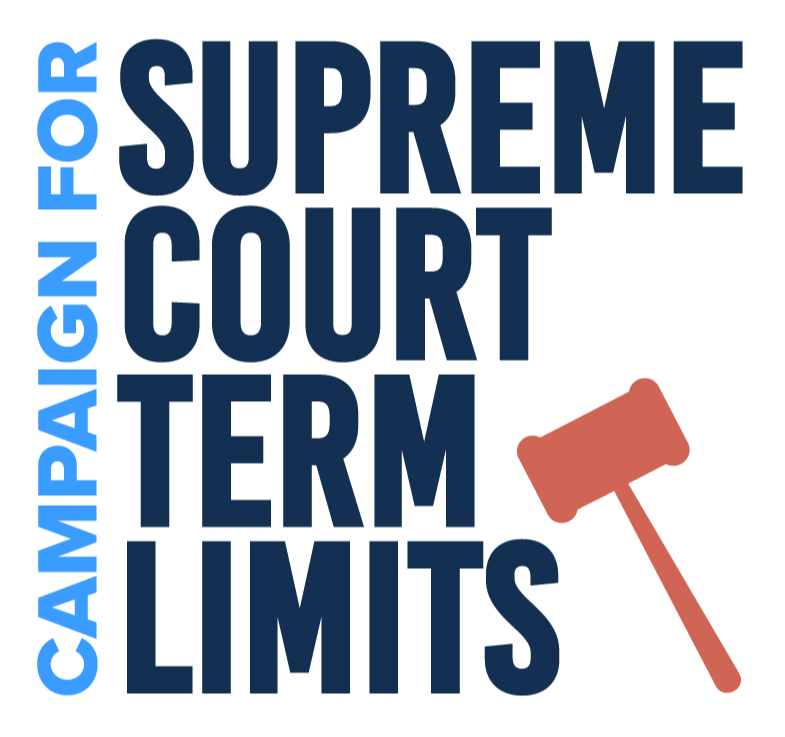Three Compelling Arguments in Favor of Supreme Court Term Limits
By Zach Klein, FTC intern
(Note: In June the Brennan Center for Justice released a report on Supreme Court term limits, concluding that staggered 18-year terms for future justices “addresses long-standing dysfunctions on the Court while squarely responding to its current deficit in democratic legitimacy. And it is one of the rare policies that consistently garner broad bipartisan support.” Here’s our take on the report’s most compelling points.)
 1. Equalizing Presidential Impact and Enhancing Democratic Legitimacy
1. Equalizing Presidential Impact and Enhancing Democratic Legitimacy
As it stands, Supreme Court justices serve for life or until they choose to retire, which can result in uneven influence from different presidents depending on the timing of vacancies. Presidents who happen to serve while multiple justices retire or pass away can appoint several justices, potentially swinging the court’s ideological balance, while others might not get the opportunity to nominate anyone at all.
By limiting terms to 18 years, justices would not serve for several decades, which sometimes allows them to outlast multiple presidencies. This could potentially reduce the long-term impact of any one president’s appointees. Regularized appointments would ensure that every president gets to appoint a certain number of justices per term, making the process more systematic and predictable as well as reinforcing the link between the public and the Court.
2. Preventing Long-term Ideological Control and Strategic Retirements
Lifetime appointments can lead to strategic retirements, where justices try to retire under a president who will nominate a like-minded successor. Supreme Court justices, appointed for life tenure under the “good behavior” clause of the Constitution, are implicitly expected to maintain sufficient health and mental capacity to execute their duties effectively.
However, when justices, grappling with declining health or cognitive abilities, choose to hold onto their positions in anticipation of a favorable presidential successor to nominate a like-minded replacement, it can result in two potential harms.
First, it may thwart the democratic will of the people by allowing the justice’s (and thus the nominating president’s) ideological influence to extend beyond their physical capacity to serve effectively.
Second, it could subvert the constitutional mandate for a fully functioning judiciary, as the justice’s diminished capabilities may impede the Court’s operations.
These concerns underscore the need for mechanisms to ensure that Supreme Court appointments both reflect the current democratic will and uphold the functional integrity of the judiciary.
3. Adapting to Longer Lifespans and Modern Expectations
When the framers of the U.S. Constitution established life tenure for Supreme Court justices, they did so with the goal of ensuring judicial independence. They wanted to protect justices from political pressure, allowing them to make decisions based on the law and the Constitution rather than the whims of the current administration or public opinion.
However, at the time the Constitution was written in the late 18th century, average lifespans were much shorter than they are today. A justice appointed in their 50s or 60s might have been expected to serve for a decade or two, but certainly not the multiple decades that have become increasingly common as lifespans have lengthened. Supreme Court justices are now being appointed at younger ages than ever before in an effort by political parties and presidents to lock in their ideologies and jurisprudence for as long as possible.
With justices now frequently serving 30 years or more, we see extended periods during which the Court does not reflect the most recent electoral outcomes or changing societal attitudes. This has raised questions about whether life tenure still serves the democratic principles of the nation as effectively as it was intended to.
A Final Note on Ethics
Recusals and conflicts of interest can pose significant challenges at the Supreme Court level. A justice may need to recuse themselves from a case due to a personal or financial conflict of interest, or because they were involved in earlier stages of the case in a lower court.
However, at the Supreme Court level, there is no mechanism to replace a justice who recuses themselves, which can result in a tied vote and is a major reason justices claim to be reluctant to recuse themselves. Furthermore, the decision to recuse is left to the individual justice, which can lead to inconsistencies and perceptions of bias.
Under the active/senior justice model, justices would serve active terms (for instance, 18 years) and then transition to “senior” status. As senior justices, they could fill in on cases when an active justice needs to recuse themselves, thereby avoiding the possibility of tied votes.
This is an idea Justice Stevens lobbied for after his 2010 retirement.